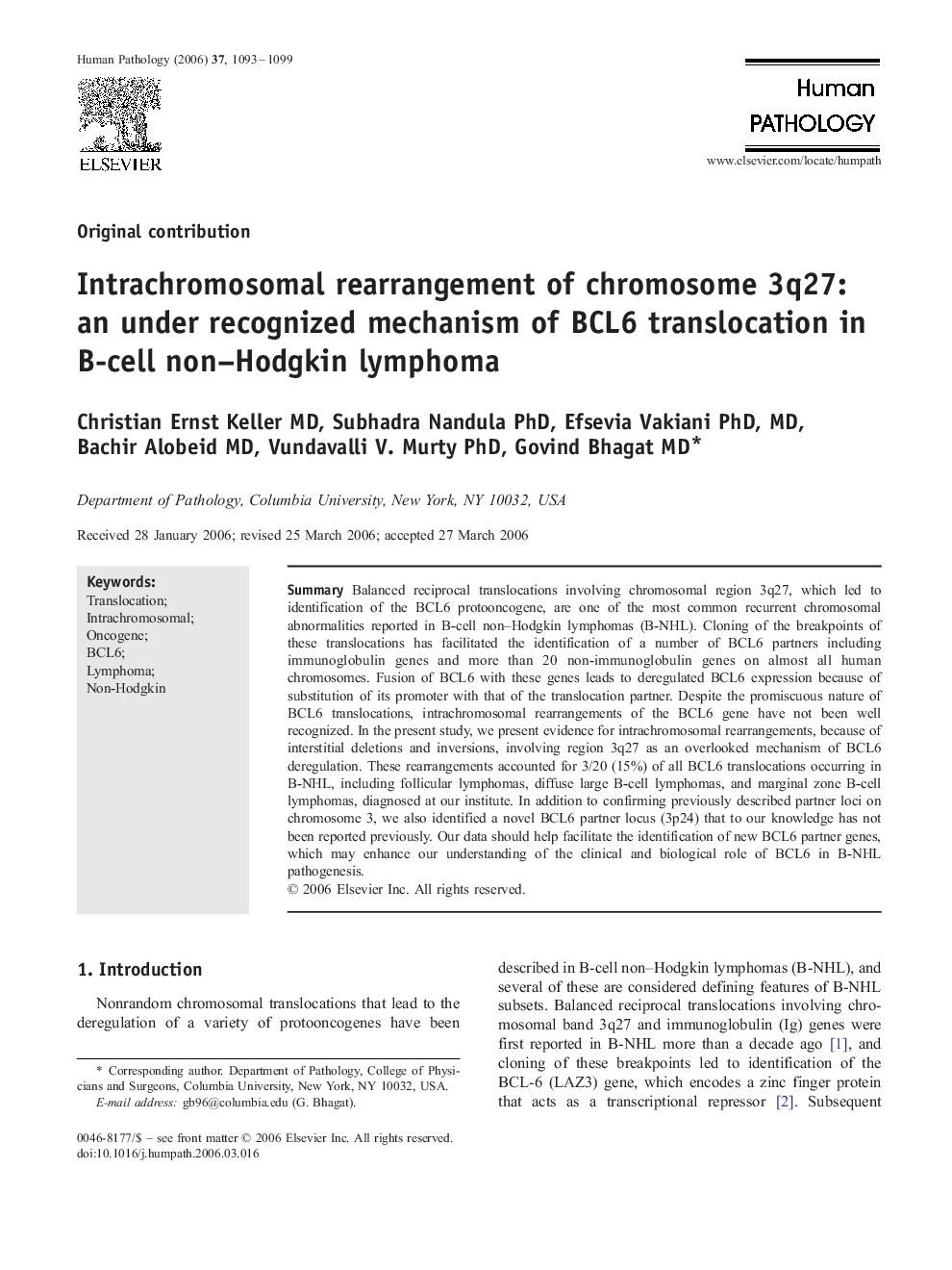| Article ID | Journal | Published Year | Pages | File Type |
|---|---|---|---|---|
| 4135707 | Human Pathology | 2006 | 7 Pages |
SummaryBalanced reciprocal translocations involving chromosomal region 3q27, which led to identification of the BCL6 protooncogene, are one of the most common recurrent chromosomal abnormalities reported in B-cell non–Hodgkin lymphomas (B-NHL). Cloning of the breakpoints of these translocations has facilitated the identification of a number of BCL6 partners including immunoglobulin genes and more than 20 non-immunoglobulin genes on almost all human chromosomes. Fusion of BCL6 with these genes leads to deregulated BCL6 expression because of substitution of its promoter with that of the translocation partner. Despite the promiscuous nature of BCL6 translocations, intrachromosomal rearrangements of the BCL6 gene have not been well recognized. In the present study, we present evidence for intrachromosomal rearrangements, because of interstitial deletions and inversions, involving region 3q27 as an overlooked mechanism of BCL6 deregulation. These rearrangements accounted for 3/20 (15%) of all BCL6 translocations occurring in B-NHL, including follicular lymphomas, diffuse large B-cell lymphomas, and marginal zone B-cell lymphomas, diagnosed at our institute. In addition to confirming previously described partner loci on chromosome 3, we also identified a novel BCL6 partner locus (3p24) that to our knowledge has not been reported previously. Our data should help facilitate the identification of new BCL6 partner genes, which may enhance our understanding of the clinical and biological role of BCL6 in B-NHL pathogenesis.
